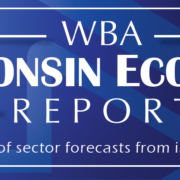Impact of CARES Act on Retirement Accounts
This was the Special Focus section for the May 2020 Compliance Journal, click here to view the entire edition.
Title II, Subpart B of the Coronavirus Aid, Relief, and Economic Security Act (CARES Act) consists of provisions that affect retirement account distributions, charitable contributions, and employer payments on student loans. The following is a summary of the provision affecting retirement accounts.
Several sections of Subpart B effect distributions from retirement accounts including: temporary treatment for coronavirus-related distributions, limited repayment and income tax treatments for qualified individuals, and waivers from required minimum distributions.
Coronavirus-related Distributions
The new law allows for temporary treatment for distributions referred to as “coronavirus-related distributions” (CRDs). For a distribution to be considered a CRD, the distribution need be:
- Made on or after January 1, 2020 and before December 31, 2020; and
- Made to an individual:
- Who is diagnosed with the virus SARS-CoV-2 or with coronavirus disease 2019 (COVID-19) by a test approved by the Centers for Disease Control and Prevention;
- Whose spouse or dependent (as defined in section 152 of the Internal Revenue Code) is diagnosed with such virus or disease by such a test; or
- Who experiences adverse financial consequences as a result of being:
- Quarantined;
- Furloughed or laid off or having work hours reduced due to such virus or disease; or
- Unable to work due to lack of childcare due to such virus or disease, closing or reducing hours of a business owned or operated by the individual due to such virus or disease, or other factors as determined by the Secretary of the Treasury.
CRDs are permitted for up to $100,000 (in the aggregate) from eligible retirement accounts and are not subject to the standard 10% withholding tax penalty that would otherwise apply to a distribution taken before the participant was 59½. Eligible retirement accounts include qualified defined contribution retirement plans, including 401(k), 403(b), 457(b), and IRAs.
The new law does allow for retirement plan administrators to rely upon an employee certification that he/she meets the CARES Act conditions to make a CRD. There is no further detail in the CARES Act regarding what specific certification should be made for reliance there upon.
CRDs will automatically be included as qualified individual taxable income ratably over a 3-taxable year period beginning with the year withdrawn. The participant may voluntarily elect income treatment differently—such as including CRDs as qualified taxable income all in one tax year.
The CARES Act also allows participants to repay CRDs back to eligible retirement plans and IRAs for which they are beneficiaries and for which a rollover contribution of such distributions can be made. The repayment period is three years from date the distribution was received. Repayments will be treated as satisfying general 60-day rollover requirements and will generally require the participant to file an amended tax return.
Loans from Qualified Retirement Plans
Separate from options available for CRDs, the CARES Act increases the amount qualified individuals may borrow from a qualified retirement plan. From the date of enactment until 180 days thereafter, qualified individuals may borrow up to 100% of the individual’s vested account balance or $100,000, whichever is less. This is an increase from current thresholds of 50% and $50,000. A qualified individual is someone that meets the criteria listed in item 2. above. Not all retirement plans allow for participant loans; plan participants should discuss loan options with retirement plan administrators.
In the case of a qualified individual with an outstanding loan from a qualified retirement plan on or after the date of enactment of the CARES Act (March 27, 2020), if the due date for any repayment of the outstanding loan occurs during the period beginning March 27, 2020 and ending December 31, 2020, such due date is delayed for one year. In determining the traditional 5-year period for when a loan from a qualified retirement plan must be repaid, the traditional time period disregards the delayed period.
Waiver of Required Minimum Distribution for 2020
The rules for required minimum distributions (RMDs) for defined contribution plans (such as 403(b) and certain 457(b) accounts) and IRAs have also been impacted by the CARES Act. Under section 2203 of the Act, RMDs are waived for 2020. Due to the changes, an accountholder who was otherwise required to take an RMD in 2020 is no longer required to take the RMD. Additionally, an accountholder who turned 70½ in 2019 but had not yet taken the first RMD by April 1, 2020, is not required to take the first RMD; nor is that accountholder required to take a 2020 RMD.
The RMD changes also impact inherited IRA-holders. If an accountholder inherited an IRA from a person who died before January 1, 2020, the accountholder is not required to take a 2020 RMD. If the accountholder inherited an IRA as a designated beneficiary, the accountholder is generally required have the IRA funds distributed to him/her within a ten-year time period. Under the CARES Act, if the death occurred after December 2019, the ten-year period does not start until 2021—skipping 2020. A non-designated beneficiary (i.e., estate, charity) normally is required to receive the inherited IRA funds over a 5-year period. Under the CARES Act, 2020 is skipped giving the non-designated beneficiary six years to have the IRA funds fully distributed.
A change made by the CARES Act is independent of the Setting Every Community up for Retirement Enhancement Act (SECURE Act). The CARES Act made no changes to the new timing rules of the SECURE Act. Thus, under the SECURE Act, it remains that if an IRA-holder reached 70½ prior to January 1, 2020, or if the IRA-holder is not yet 70½, once the IRA-holder reaches 72 after December 31, 2019, he/she must take an RMD.
Bank Considerations
Given the new distribution flexibilities for retirement accounts, banks should consider whether further tracking of withdrawals should be implemented for distributions made pursuant to the CARES Act. For example, is the bank be able to track the amount of CRDs taken by a qualified individual from an IRA to help ensure the customer did not exceed the $100,000 threshold. Or whether the bank should track CRDs to then anticipate repayments thereof and perhaps monitor both the timing and amount of repayment.
Bank should also consider whether any type of automatic RMD activity need be ceased before an otherwise pre-arranged RMD is disbursed to the customer. Banks should be in contact with those IRA customers in distribution regarding the changes made to RMDs. IRA customers may still decide to voluntarily receive an RMD even though the CARES Act waives the distribution requirement for 2020.
Banks should also become familiar with the frequently asked questions released by the Internal Revenue Service (IRS) regarding the changes made by the CARES Act. In the guidance, IRS references past guidance issued after Hurricane Katrina. It is expected IRS will use the practices implemented in that past disaster in its implementation of the CARES Act changes. IRS needs to issue further guidance for some of the changes made by the CARES Act; banks should keep an eye on the IRS website for that further guidance. The IRS guidance may be viewed at: https://www.irs.gov/newsroom/coronavirus-related-relief-for-retirement-plans-and-iras-questions-and-answers
Conclusion
Title II, Subpart B of CARES Act affect retirement account distributions, charitable contributions, and employer payments on student loans. The changes made to retirement accounts include CRDs, limited repayment and income tax treatments for certain withdrawals made by qualified individuals, and waivers from RMDs for 2020.
Banks should be familiar with guidance issued by the IRS, including a series of frequently asked questions and should consider how the changes may impact IRA operations. Bank should also consider reaching out to IRA customers currently in distribution regarding the opportunity to waive RMDs for 2020.
By, Ally Bates






